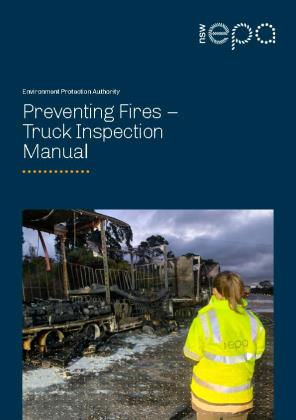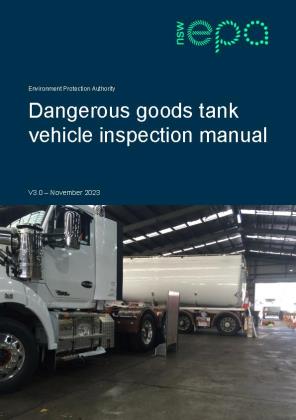Vehicle maintenance
Information about the requirements for dangerous goods vehicle maintenance.
All vehicles used to transport of dangerous goods must comply with the requirements of Chapter 4.4 of the Australian Dangerous Goods Code (ADG Code). This reduces the risk of an incident occurring during transport that would result in a dangerous situation.
It is essential that a vehicle used to transport dangerous goods is in a suitable condition to transport the goods. This includes ensuring that the vehicle
- complies with mass, dimension and loading requirements
- does not have any defects that would create a risk in transporting dangerous goods
- does not have any dangerous goods spilled or leaked on the vehicle
- is fitted with or carries appropriate equipment to secure the dangerous goods or cargo transport unit
An inspection and maintenance regime should be instituted for any vehicle used to transport dangerous goods to ensure its suitability.
A tank vehicle used to transport dangerous goods must also comply with additional requirements set out in section 4.4.2 of the ADG Code. This includes selection, inspection, testing and maintenance requirements for the vehicle, which are set out in the ADG Code and Australian Standard AS 2809.
Inspection and maintenance of licensed vehicles
Vehicles licensed under the dangerous goods legislation are subject to additional requirements introduced in the Dangerous Goods (Road and Rail Transport) Regulation 2022 to ensure that vehicles are maintained to meet the requirements of the dangerous goods legislation, ADG Code and AS 2809.
Anyone who carries out inspection and maintenance of a licensed dangerous goods vehicle must ensure that the inspection and maintenance is carried out in accordance with the requirements of the ADG Code.
For non-tank vehicles the inspection and maintenance regime must ensure that the vehicle meets the requirements outlined in Chapter 4.4. This covers standard maintenance items required to ensure the vehicle is roadworthy.
For tank vehicles these requirements are set out in detail by the ADG Code and AS 2809. Tank vehicles present a higher risk in transport, so more detailed inspections are required to ensure they remain safe and suitable for use.
Preventing fires – truck inspection manual
More than 200 trucks catch fire every year in NSW. Many of these fires are preventable. These fires endanger lives, and can cause water, land and air pollution, significant traffic delays, and often result in the destruction of the truck and its cargo.
We have worked with truck fire investigators to create the Preventing fires – truck inspection manual (PDF 4MB) for fleet operators, workshop managers and mechanics, to assist them to identify potential causes of truck fires and help prevent them from occurring. The manual focuses on more than pre-journey checks and includes
- guidance for drivers (PDF 832KB) to help them identify faults – such as overheating brakes and electrical faults that could lead to fires while in transit. This guidance also informs drivers about what to do in the event of a fire starting.
- a checklist for mechanics (PDF 252 KB) to assist in vehicle inspections
Dangerous goods – tank vehicle inspection manual
The aim of the Dangerous Goods Tank Vehicle Inspection Manual (PDF 2.4MB) (DGTVIM) is to help operators and repairers of tank vehicles demonstrate that the vehicle is safe and meets the legislative requirements.
The DGTVIM was been prepared in conjunction with industry to assist operators, repairers.
The DGTVIM sets out
- the requirements that must be met
- ways to meet the requirements, and
- the reasons a vehicle is deemed not to have met the requirements.
Most items in the DGTVIM need to be inspected every three months.
The DGTVIM is currently being updated to reflect the changes that have occurred in the latest editions of AS 2809. We will publish this update after the current updates to AS 2809.1 and AS 2809.2 are published by Standards Australia.



